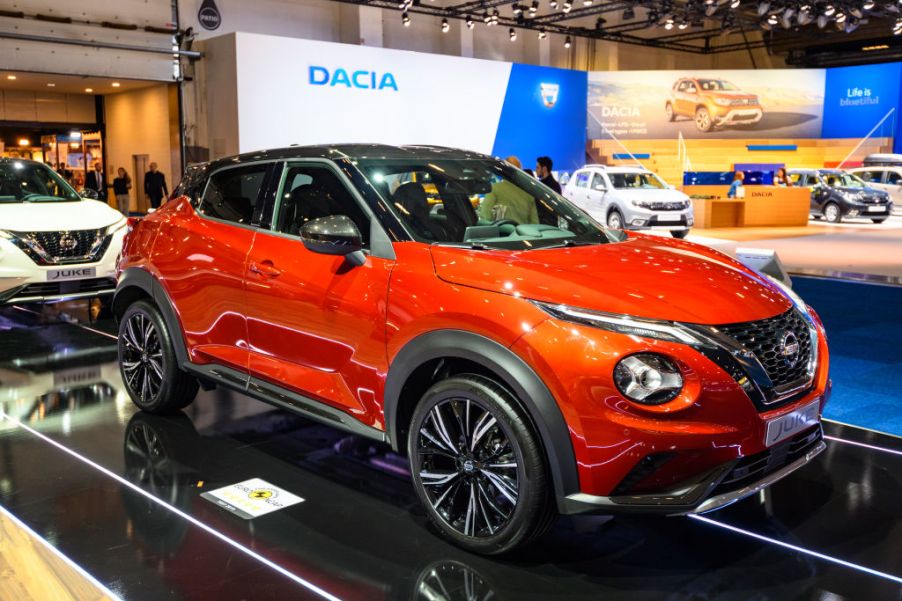
The Nissan Juke’s Sales Numbers Fell Off Embarrassingly Hard
The Nissan brand has designed and produced some of the world’s most popular vehicles. But not every automaker is perfect, and every once in a while, a dud appears in the lineup. While the compact Nissan Juke crossover came in as a unique segment option, sales numbers took an embarrassing turn that led Nissan in a completely new direction.
Nissan Juke sales numbers go from hot to cold, then colder

The Juke crossover’s first year of sales unknowingly set the tone for Nissan in the future. According to GoodCarBadCar, less than 9,000 models sold in 2010, but as its first incomplete year, Nissan was rightfully unconcerned. The Juke gained momentum and popularity in its second year, selling nearly 36,000 in its first complete year (2011). The next few years fared OK, with the model selling 39,305, 38,157, and 38,184 units in 2012, 2013, and 2014, respectively.
Even though these numbers are small in comparison to how other Nissan models were selling, the Juke was still faring well as a new crossover. Interest in the Juke fell off after 2014, with sales dropping in staggering numbers every year thereafter. In 2015, sales for the Juke fell to 27,121. With one foot off the cliff, sales kept plummeting. Nissan sold less than 20,000 models in 2016 and nearly 10,000 in 2017. With this tremendous dip in sales, Nissan had to do something quickly.
The failure of the Juke: how Nissan saved the day
After selling only around 10,000 models in 2017, Nissan realized its uniquely styled crossover wasn’t holding up in the competitive segment. According to Motor1, Nissan announced in 2018 that it would be cutting the Juke from its American lineup, where sales plummeted. The vehicle would remain in the European lineup, where more than 95,000 models sold in the same 2017 year. With the Juke being pulled from plans, Nissan only sold a few leftovers over the next few years: 731 in 2018 and 11 in 2019.
Not ready to admit defeat, however, Nissan noticed the falling numbers and quickly came up with a plan to remain in the compact crossover market. Though Nissan’s newest Kicks crossover wasn’t specifically named as the Juke’s replacement, it sure came in at the right time to save the brand’s performance in the segment. According to Nissan’s website, “The Juke is no longer, but you’ll continue to find everything that made the Nissan Juke a crossover that defied expectations with the 2020 Nissan Kicks.”
Is the Kicks the replacement Nissan needs?
The Nissan Kicks debuted for the 2018 model year just in time to replace “the funky-looking Juke,” according to Consumer Reports. The Juke’s appeal simply didn’t catch buyers as Nissan planned. According to CarBuzz, the compact crossover was supposed to appeal to a younger, single crowd that would appreciate its “zippy” nature. But single shoppers had better options to choose from, and its lack of headroom and cramped interior didn’t speak to family crossover buyers.
And, according to Nissan, the Kicks compact crossover is already outperforming its predecessor. In 2018, its first full year of sales, Nissan sold 23,312 Kicks models. Already faring better than the Juke, an impressive 58,193 Nissan Kicks sold in 2019. The Kicks subcompact SUV is doing so well, it’s one of the only vehicles in Nissan’s lineup that has experienced an improvement in sales in 2019 over the 2018 year.
According to Consumer Reports, the 2020 Nissan Kicks is a budget seeker’s dream, targeting buyers who want the easy access and space of a compact SUV, “but don’t want to pay for features they may not want.”


